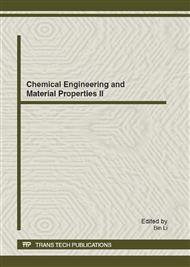p.457
p.462
p.466
p.470
p.474
p.478
p.482
p.487
p.491
Extraction and Determination of Essential Oil in Different Cultivars of Amomum Tsao-Ko
Abstract:
Essential oil in four cultivars fruits of Amomum tsao-ko were extracted and determined by the method of gas chromatography (GC) and GC-coupled mass spectrometry (GC-MS). The essential oils content of 86.50%, 77.05%, 83.02% and 77.50% were achieved in the four cultivars of Ellipse, Fusiform, Spherical, and Conical A. tsao-ko fruits, respectively. The results showed that the identified major common components of the essential oil are 1,8-cineole, citral, α-terpineol, α-phellandrene, α-pinene, β-pinene, γ-terpinen, and nerolidol, the most abundant component is 1,8-cineole which accounts for about 36% in all four cultivars and it may be useful for industrial exploitation as well as chemotaxonomic characterization. The results also indicated that the four A. tsao-ko fruit cultivars belong to eucalyptol-rich type and the observed chemical variability between the studied species and cultivars seems to results from the gengtic variability.
Info:
Periodical:
Pages:
474-477
Citation:
Online since:
July 2012
Authors:
Keywords:
Price:
Сopyright:
© 2012 Trans Tech Publications Ltd. All Rights Reserved
Share:
Citation:


